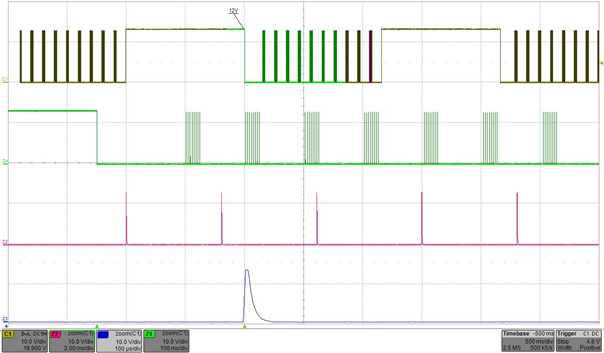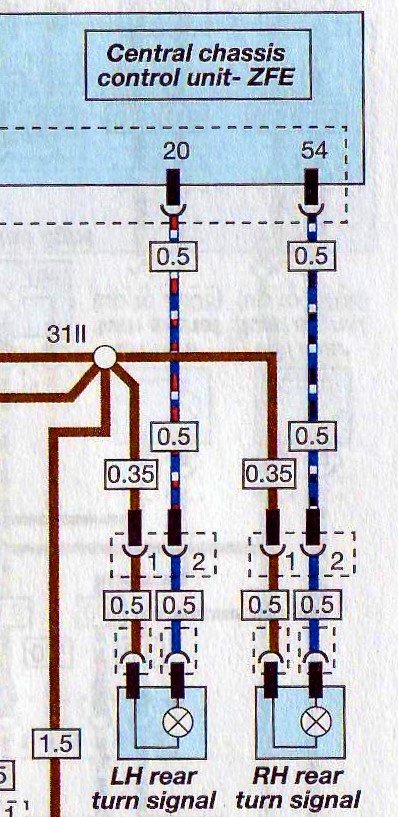RadioFlyer
Right2Repair
How often have you seen or heard the term “CAN-bus” in the context of a compatible charger for the accessory socket? Way too often and almost always dead wrong.
“CAN-bus” is probably the most misused term in all of BMW-related forum electrical discussions. While most of the forum discussions are about wiring in farkles this post is about charging via the accessory port.
For an understanding of what the CAN-bus actually is and does I suggest reading the article on Wikipedia.
The ZFE (Zentrale Fahrzeugelektronik or Central Chassis Electrics) is one of several controllers on modern BMW motorcycles. Its job is to manage chassis electrics. It senses logical inputs from switches and responds by turning things (lights, horns, grip heaters…) on and off. It also monitors current draw. If the current draw exceeds a threshold then the circuit is shut down so the ZFE replaces fuses. If the current draw is below a threshold on a light circuit the ZFE assumes that there is a burned out bulb or a wiring fault and tells the Kombi (the instrument cluster) to display a warning. The ZFE manages the accessory port and shuts it down if too much current is drawn (said to be 5A although I have never seen a published figure). The ZFE also monitors the accessory port for the presence of a compatible charger and connects it to the battery for charging.
Compatible chargers are often referred to as “CAN-bus” chargers or some other term using “CAN-bus”. This is nonsense and has led to a great deal of confusion. This misuse of the term “CAN-bus” probably originates with charger vendors. Early on the vendors would characterize chargers as being suitable for “CAN-bus equipped” motorcycles as a way of saying that the motorcycle had a ZFE. Later the terminology morphed into terms like “CAN-bus compatible”, “CAN-bus charger” and “CAN-bus mode”.
The CAN-bus itself does not play a role in charging via the accessory port. That many say it does is part of the mythology.
The ZFE “listens” for a specific electrical handshake from a charger and if the handshake is present the ZFE connects the charger through to the battery. No CAN-bus messaging is required to accomplish this.
Here is what the handshake looks like.

A ZFE compatible charger sends and repeats a pulse train to the accessory port. The pulse train starts with the charger presenting 12V to the port for 1 second. Then it waits for 150 milliseconds. Next it sends a series of ten 12V pulses each having a duration of 10 microseconds and spaced 100 milliseconds apart. It repeats this pulse train until it senses that the ZFE has connected it to the battery and then it starts its charging procedure.
Of course you can always attach a charger directly to the battery but BMW instructs you to not do so while the battery is installed in the bike. Why? The reason is that many modern chargers are “smart” and will try to recondition (disulphate) a battery if it decides that the battery needs reconditioning. The desulphation process involves the application of high voltage pulses to the battery and if the battery is connected in the bike then all the bike’s expensive electronics also get exposed to the high voltage pulses as well. So there is some risk of damage involved. BMW isn’t going to try to explain how to determine whether your particular charger has a desulphation capability or not so it just tells you not to charge the battery directly in the bike to mitigate the risk.
If you have a smart charger and intend to connect direct to the battery while the battery is in the bike you should read the charger’s manual to see if the desulphation mode can be disabled. I use the Optimate 4 charger in its “CAN-bus mode” (sic) direct to the battery because in that mode high voltage desulphation is deactivated. I can’t be bothered with charging via the accessory port.
“CAN-bus” is probably the most misused term in all of BMW-related forum electrical discussions. While most of the forum discussions are about wiring in farkles this post is about charging via the accessory port.
For an understanding of what the CAN-bus actually is and does I suggest reading the article on Wikipedia.
The ZFE (Zentrale Fahrzeugelektronik or Central Chassis Electrics) is one of several controllers on modern BMW motorcycles. Its job is to manage chassis electrics. It senses logical inputs from switches and responds by turning things (lights, horns, grip heaters…) on and off. It also monitors current draw. If the current draw exceeds a threshold then the circuit is shut down so the ZFE replaces fuses. If the current draw is below a threshold on a light circuit the ZFE assumes that there is a burned out bulb or a wiring fault and tells the Kombi (the instrument cluster) to display a warning. The ZFE manages the accessory port and shuts it down if too much current is drawn (said to be 5A although I have never seen a published figure). The ZFE also monitors the accessory port for the presence of a compatible charger and connects it to the battery for charging.
Compatible chargers are often referred to as “CAN-bus” chargers or some other term using “CAN-bus”. This is nonsense and has led to a great deal of confusion. This misuse of the term “CAN-bus” probably originates with charger vendors. Early on the vendors would characterize chargers as being suitable for “CAN-bus equipped” motorcycles as a way of saying that the motorcycle had a ZFE. Later the terminology morphed into terms like “CAN-bus compatible”, “CAN-bus charger” and “CAN-bus mode”.
The CAN-bus itself does not play a role in charging via the accessory port. That many say it does is part of the mythology.
The ZFE “listens” for a specific electrical handshake from a charger and if the handshake is present the ZFE connects the charger through to the battery. No CAN-bus messaging is required to accomplish this.
Here is what the handshake looks like.

A ZFE compatible charger sends and repeats a pulse train to the accessory port. The pulse train starts with the charger presenting 12V to the port for 1 second. Then it waits for 150 milliseconds. Next it sends a series of ten 12V pulses each having a duration of 10 microseconds and spaced 100 milliseconds apart. It repeats this pulse train until it senses that the ZFE has connected it to the battery and then it starts its charging procedure.
Of course you can always attach a charger directly to the battery but BMW instructs you to not do so while the battery is installed in the bike. Why? The reason is that many modern chargers are “smart” and will try to recondition (disulphate) a battery if it decides that the battery needs reconditioning. The desulphation process involves the application of high voltage pulses to the battery and if the battery is connected in the bike then all the bike’s expensive electronics also get exposed to the high voltage pulses as well. So there is some risk of damage involved. BMW isn’t going to try to explain how to determine whether your particular charger has a desulphation capability or not so it just tells you not to charge the battery directly in the bike to mitigate the risk.
If you have a smart charger and intend to connect direct to the battery while the battery is in the bike you should read the charger’s manual to see if the desulphation mode can be disabled. I use the Optimate 4 charger in its “CAN-bus mode” (sic) direct to the battery because in that mode high voltage desulphation is deactivated. I can’t be bothered with charging via the accessory port.

